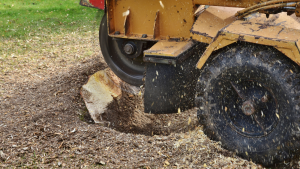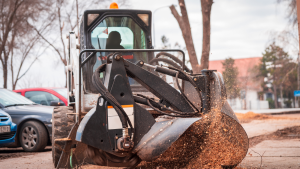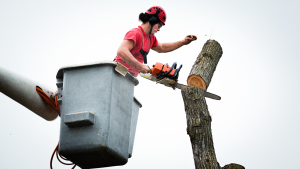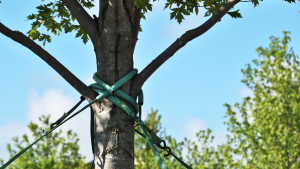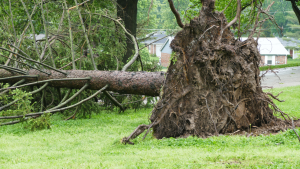Trees are not just silent bystanders in our landscapes; they are living entities that require care and attention throughout the year. One crucial aspect of tree maintenance is trimming, a practice that goes beyond mere aesthetics. In this guide, we’ll delve into the art of tree trimming, exploring the best times to trim, the unique needs for each season, signs that your trees need attention, and tips on maintaining their health year-round. Joliet Tree Service is Your go-to choice for exceptional tree care service. Count on our experienced team to provide top-notch care for your trees in Joliet, Illinois.
As the seasons change and our landscapes evolve, one important aspect of tree care often overlooked is pruning. Pruning is a vital practice that promotes the health and aesthetics of trees. To ensure the best results, it’s crucial to understand the best times to trim trees, considering factors like tree type and local climate. Let’s dive into the intricacies of tree pruning and discover the optimal moments to sculpt your leafy companions.
However, some exceptions exist. For trees that flower in late winter or early spring, such as dogwood or magnolia, it’s advisable to wait until immediately after flowering to trim. Deciduous trees, on the other hand, can be pruned during late winter or early spring before new growth emerges.
Best Time of Year to Trim Your Trees
Timing is everything when it comes to tree trimming, and achieving the best results requires careful consideration of the tree species and the environmental conditions. In general, the consensus among arborists is that late winter to early spring is often considered the ideal time for tree trimming. This time frame holds several advantages for both the trees and the arborists.
Late winter to early spring is the season when most trees are dormant, devoid of leaves, making it easier to assess their structure with precision. The absence of foliage allows for a clear view of the tree’s architecture, enabling arborists to make informed pruning decisions. This unobstructed view is crucial for shaping the tree without compromising its overall health.
When to Prune Trees by Tree Type
Different types of trees may have specific ideal pruning times based on their growth patterns. Here’s a brief overview:
Deciduous Trees
- Best Time: Late winter to early spring.
- Why: Pruning during dormancy promotes vigorous regrowth in the spring.
Evergreen Trees
- Best Time: Late winter or early spring before the new growth starts.
- Why: Allows the tree to allocate resources efficiently for the upcoming growing season.
Flowering Trees
- Best Time: Right after flowering.
- Why: Preserves the current season’s blooms while encouraging next year’s growth.
Fruit Trees
- Best Time: Late winter to early spring before bud break.
- Why: Enhances fruit production by maintaining the tree’s shape and structure.
Conifers
- Best Time: Late winter or early spring.
- Why: Promotes denser growth and maintains an appealing shape.
Different Needs for Trimming in Each Season
Spring
In spring, as the temperatures rise and buds start to burst, it’s the perfect time to rejuvenate your trees. Focus on removing dead or damaged branches to encourage healthy new growth.
This process not only enhances the tree’s overall appearance but also stimulates the development of new, robust branches. Be cautious not to over-prune, as this may stress the tree. Instead, aim for a balanced approach that promotes vitality without compromising the tree’s energy reserves.
Summer
As the summer sun bathes your landscape, it’s time to trim for shape and safety. During the warm weather, trees can heal quickly, which is great for shaping them.
Trim them in the summer to keep a nice shape and get rid of any branches that could be dangerous, like those hanging too low. This not only makes your trees look better but also lowers the chances of accidents during storms or strong winds.
Fall
The arrival of fall signals a transition in tree care focus. Address issues like weak or overgrown branches before winter storms arrive. The goal is to prepare your trees for the challenges of winter by reducing wind resistance and preventing ptential breakage under heavy snow or ice.
Fall trimming also provides an opportunity to clear out any accumulated debris and promote a healthier environment for your trees during their dormant phase.
Winter
Contrary to common belief, winter is not a time to neglect your trees. While growth may slow, it’s an opportune moment to continue removing deadwood and address any structural issues. Winter trimming helps maintain the tree’s structural integrity by removing weak or hazardous branches. With the absence of leaves, it becomes easier to identify and address potential problems. Just ensure that the weather conditions are suitable for pruning, avoiding extreme cold or frozen branches.
When you trim your trees at the right times in each season, you’re taking good care of them. It makes your landscape look better and keeps your trees healthy for a long time. So, follow the seasons and take care of your trees all year round.
6 Signs You Need to Trim Trees Throughout the Year
- Dead or Diseased Branches: Brown or brittle branches may be a sign of disease or decay.
- Overgrown Branches: Branches that are too close together can create a haven for pests and diseases.
- Broken Branches: Storms can cause damage, and broken branches are potential hazards.
- Crossing Branches: Branches that rub against each other can cause wounds and compromise the tree’s health.
- Unbalanced Crown: A lopsided or unbalanced canopy may indicate the need for selective trimming.
- Visible Decay: Fungus, cankers, or other signs of decay should be addressed promptly.
How to Maintain a Tree Throughout the Year
- Regular Inspections: Conduct frequent visual inspections to identify issues early.
- Pruning Techniques: Use proper pruning techniques, such as making clean cuts just outside the branch collar.
- Mulching: Apply a layer of mulch around the base of the tree to retain moisture and suppress weeds.
- Watering: Ensure trees receive adequate water, especially during dry spells.
- Professional Assistance: For complex or large trees, consider consulting with a certified arborist.
Taking care of your trees is something you should do all year to keep your landscape healthy. If you know when it’s best to trim them, understand what each season requires, and pay attention to your trees’ signals, you can help them stay healthy and look good. Well-cared-for trees don’t just make your property look nice, they also help the environment a lot. So, get your pruning shears, go with the flow of the seasons, and watch your trees grow strong and beautiful all year long. Your leafy friends will show their appreciation with colorful leaves and a strong presence that lasts for a long time.
Learn more about Mastering Trimming Techniques: Improving Your Tree Care

